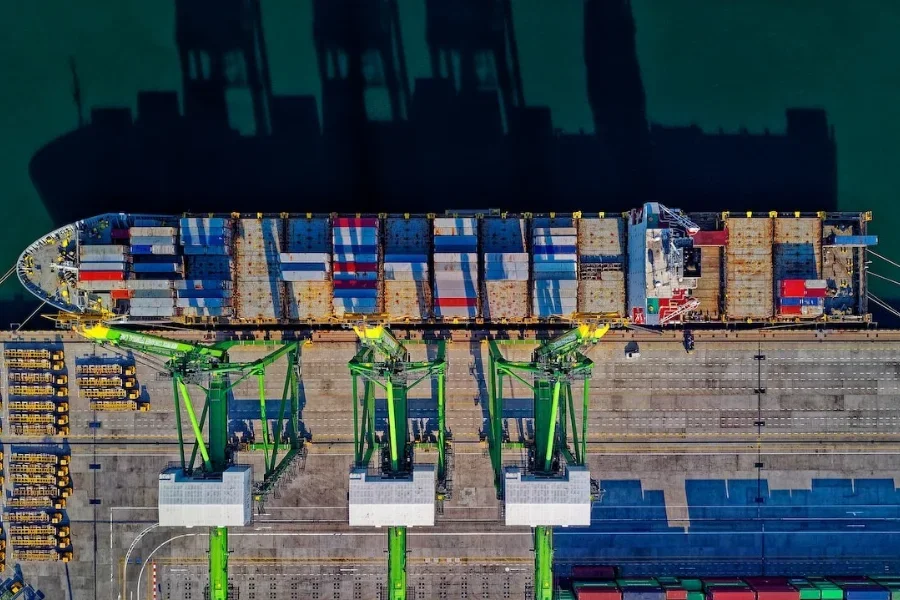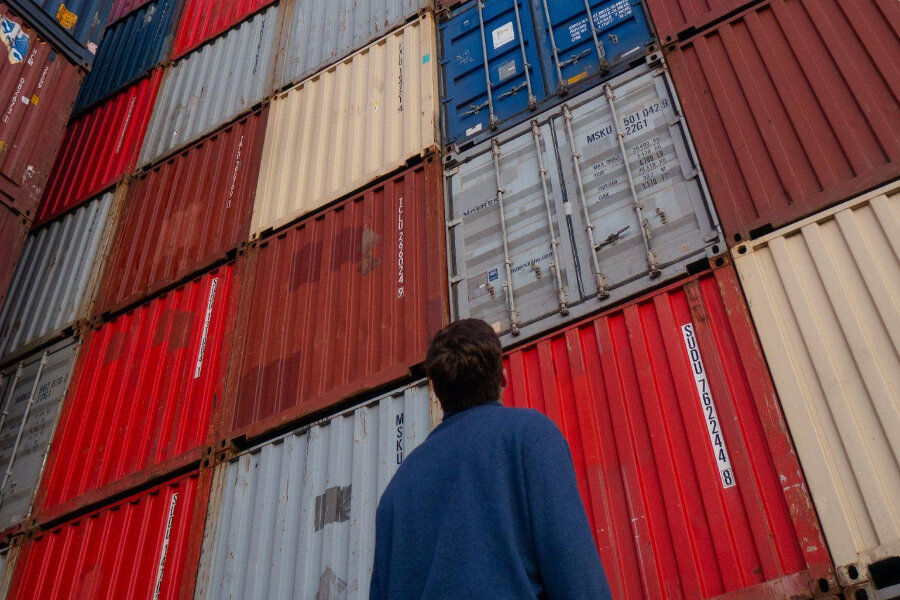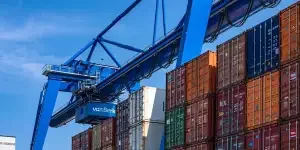International trade is a massive industry, and the volume of goods being shipped around the world is increasing every day. In 2021 alone, world trade hit an all-time high of $28.5 trillion. And as companies continue to enter into new global markets and find new ways to work together across international borders, it’s more important than ever to be well-versed with the key shipping documents.
Improper shipping documentation can hold up the shipment and cause unnecessary delays that could cost businesses their time, money, and reputation. In this article, we’re going to focus on one specific shipping document: the bill of lading. Let’s take a look at the purpose of a bill of lading and why it matters for businesses involved in international trade.

Table of Contents
What is a bill of lading?
Who needs a bill of lading?
What is the importance of the bill of lading?
What is the purpose of the bill of lading?
What are the most common types of bills of lading?
What does a bill of lading include?
Practical example of a bill of lading
BoL document: not just paper, but a key to global shipments
What is a bill of lading?
A bill of lading (BoL) is a legal document that outlines the terms and conditions for the transportation of goods. It acts as a contract of carriage between the shipper and the carrier. It’s used to declare the contents of the shipment, where it’s going, and where it came from.
The bill of lading can also include other information, such as the weight or volume of the goods, who they’re being shipped by and to (also known as consignor and consignee), what kind of packaging they’re in, and more.
Who needs a bill of lading?

Well, pretty much anyone who’s involved in moving cargo from one place to another. Every party involved in international trade is concerned with bills of lading, whether they are importers, exporters, or carriers.
What is the importance of the bill of lading?

The bill of lading is one of the most important shipping documents. It serves as proof of ownership over the cargo and is the document that identifies and authenticates a shipment, regardless of its size or value. As a result, it helps prevent fraud or theft during transit. In fact, without a BoL, there’s no proof that anyone owns or has responsibility for a given shipment.
What is the purpose of the bill of lading?

The BoL is a critical part of any shipping process because it allows all involved parties to keep track of the shipments as they move from point A to point B. This legal document has three main purposes:
Document of title
The bill of lading is a legally binding contract that serves as a document of title for goods. It gives the carrier authority to transport and deliver the goods, and it confirms ownership of the goods by the shipper.
Shipment receipt
Acting as authoritative proof of shipment, a BoL is used to document the transfer of ownership from a shipper to a carrier or freight forwarder. In the event of damages to the cargo, or if carriers fail to deliver on time, a bill of lading will be a crucial piece of evidence in litigation.
Mutual agreement
A BoL is an important piece of paper, to the extent it also represents the terms and conditions agreed upon by the consignor and the carrier. It includes details on the transported goods, their destination, any special handling instructions, and much more.
What are the most common types of bills of lading?

It’s important to understand that there is not one single type of bill of lading. There are various bill of lading types used, depending on the terms set by the parties involved in the transportation process. Some are specific to certain modes of transport, while others are only applicable under certain conditions or situations. Let’s check the common types and how they differ from one another.
Negotiable bill of lading
A negotiable bill of lading (NBL) is a document that allows the holder (the shipper or the consignor) to transfer possession and title of goods to a third party (the consignee). An NBL can be transferred from one party to another through consignment and is only valid when signed by the original shipper. It’s like having a blank check—anyone who has it can claim ownership of the goods listed on it.
Non-negotiable bill of lading
As the name suggests, a non-negotiable bill of lading cannot be transferred to a third party. The receiver’s name must appear on the bill of lading, and no other party may take possession of the goods without their consent. This type of document is used when there is no need for a change of hands or transfer to another carrier.
Straight bill of lading
A straight bill of lading is a type of non-negotiable BoL that requires the receiver to pay the full cost of their shipment before they receive the goods. Thus, they take on all risks associated with transportation. On the plus side, a straight BoL simplifies financial transactions and eliminates the need for multiple documents to be sent back and forth between the parties.
Ocean bill of lading
An ocean bill of lading is a legal contract between the shipper and carrier that details the terms of transportation for goods by sea freight. It acts as a shipment invoice signed by both parties and contains information about the contents of the shipment, like weight and dimensions. Once the cargo reaches its destination, the receiver signs off on it and accepts delivery.
Clean bill of lading
A clean bill of lading is a specific type of ocean bill of lading, issued by the carrier after inspecting the condition of goods at the time they were loaded onto a vessel. It’s a confirmation that all goods have been inspected and no damage or defects are present. This document is a way for the receiver to verify that what was shipped matches what was ordered.
Claused bill of lading
A claused bill of lading is usually issued when the carrier detects some kind of discrepancy with the consignment or its condition. It lists everything from missing items to damaged ones, including what was supposed to be there and what actually arrived.
What does a bill of lading include?
Let’s now walk through some common sections of a generic bill of lading template. We’ll cover how to fill out a BoL document and what every bill of lading should include.
| Section | Description |
| Shipper | Information about who is sending/shipping the goods, including their company name, address, contact info, etc. |
| Consignee | Information about who is receiving the goods, including their company name, address, contact info, etc. |
| Carrier | Information about the carrier agency that is responsible for transporting the goods. For example, this could be a shipping line, a freight forwarder, or an airline. |
| Bill of lading number | A unique ID is issued for each specific consignment. It can be used as an identifier to track a bill of lading. |
| Description of goods | A thorough description of the transported items, including their quantity, physical characteristics (e.g., weight). dimensions), packaging (e.g., cardboard boxes), and any special markings. |
| Hazardous materials | Any materials that, if not handled correctly, can be dangerous to people, animals, or the environment. These include flammable liquids and gases, corrosive chemicals, and radioactive materials. |
| Shipment date | The day that the goods were loaded for transportation. This will help all parties know when the items were shipped and how long it took for them to reach the final destination. |
| COD terms | The “Cash On Delivery” amount and how it needs to be paid upon delivery (e.g., could be collected by a cashier or prepaid by check or credit card). |
| Note | This section could be used to state the liability limitation for loss or damage. It provides details about how much the carrier will be responsible for if something happens to the goods during shipment. |
| Freight class | A standardized number, which is determined based on various factors such as weight, density, and value. It allows carriers and shippers to use a common set of pricing guidelines when shipping goods. |
| Signature of all parties | In order for a bill of lading to be valid, all parties involved must sign it. This includes the shipper, carrier, and driver. |
Practical example of a bill of lading
Let’s say ABC Ltd., a USA-based chocolate company, wants to upraise its production lines by 100,000 gourmet chocolate bars before Christmas. The head of the logistics department, Mr. Munro, has been searching for a new supplier of chocolate beans for weeks. He finally reached an agreement with ZXY LLC, one of Ivory Coast’s biggest cocoa producers and exporters. Mr. Munro signs an agreement with ZXY LLC., to receive 80 tons of cocoa beans at $2 per pound.
ZXY LLC prepares the order and takes it for shipment to MSX Airline Ltd., a freight forwarder based in Abidjan. This latter would issue a bill of lading stating “ZXY LLC” as the shipper, “ABC Ltd” as the consignee, “Los Angeles, CA” as the shipment destination, “Air Freight” as their agreed-upon mode of transport; and “September 1st, 2019” as the date on which these items would be shipped off. The BoL will also include information about the weight, dimensions, and physical characteristics of the chocolate beans.
On arrival at their destination port in Los Angeles, the chocolate beans will be delivered by truck directly to ABC Ltd.’s warehouse. The managers there can receive the delivery by presenting a signed copy of the BoL. Once the chocolate beans are inspected and found to be in good condition and delivered as promised, Mr. Munro will contact his company’s intermediary bank to release the payment for ZXY LLC via electronic bank transfer, and voila!
BoL document: not just paper, but a key to global shipments
In essence, the purpose of a bill of lading is to act as a legally binding document that plays a vital part in international trade. It’s the lifeblood of almost every shipment, and without it, the cargo is vulnerable to asset theft or shipment delays. Learn more about shipping documentation for a smooth and secure carriage across international borders!

Looking for a logistics solution with competitive pricing, full visibility, and readily accessible customer support? Check out the Alibaba.com Logistics Marketplace today.



